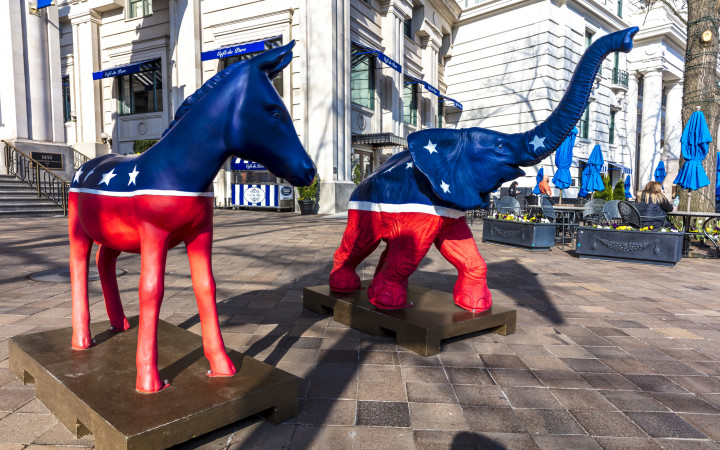Today’s Wonder of the Day was inspired by Jakob. Jakob Wonders, “where do political symbols come from?” Thanks for WONDERing with us, Jakob!
Before we talk about the mascots of the political parties, let's learn a little about political parties first.
A political party is a group of organized voters who support certain policies for their communities, states and nation.
The goal of a political party is to elect public officials, such as mayors, governors, senators and the president, who will support and carry out their goals. These goals may include policies on war, taxes and education.
When people in a democracy disagree about what the government should do, registered voters express their opinion by voting for the candidate who most closely reflects their political views and opinions. Political candidates are usually members of political parties.
This makes it easier for voters to know what the candidate believes in, his or her goals and what changes he or she will make if elected.
Political parties range in size, and large political parties have millions of members and supporters. Two of the largest political parties in the United States are the Democratic Party and the Republican Party.
In 1828, critics of Democratic President Andrew Jackson labeled him a “jackass." President Jackson, however, made the most of this new label by focusing on the positive. He commented on the donkey's admirable qualities such as stubbornness and strength.
In 1870, Thomas Nast, the best-known political cartoonist of his time, drew a donkey to represent the Democratic Party in an illustration for the publication Harper's Weekly. Nast continued to use the donkey in other political cartoons. By 1880, it had become the unofficial mascot of the Democratic Party.
Much like the donkey, we can thank Thomas Nast for the Republican mascot — the elephant.
In a cartoon published in November 1874, Nast drew the Democratic donkey wearing a lion's skin. In the cartoon, the donkey-lion is scaring all the other animals, including the elephant, which Nast used to represent the Republican vote.
Eventually Republicans began to view the elephant as a symbol of strength and intelligence, and it has since been adopted as the party's symbol.




